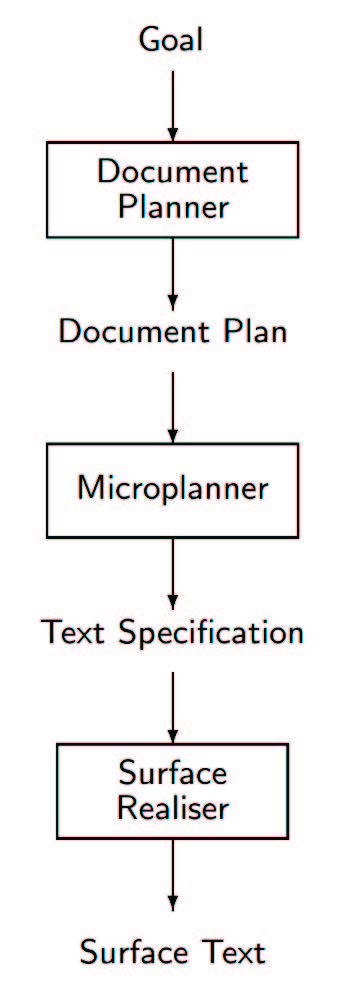Architecture
The architecture of the template-based NLG system loosely follows the tri-module pipeline approach
as proposed by Reiter and Dale and shown in the diagram here. The Document Planner module evaluates
the input provided by creating a list of the slot types and creating a Document Plan from them. This
Document Plan is passed to the Microplanner module which randomly chooses one of the redundant list
of minor templates, and creates a Setnece Plan from it. The Realiser module takes the Sentence Plan
and generates human-readable sentences.
